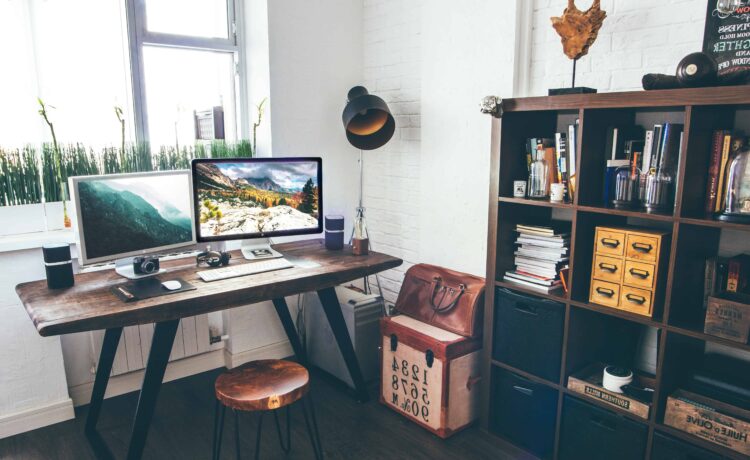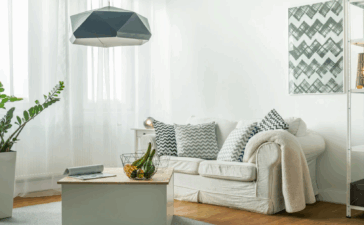Creating the perfect home office begins with selecting the right furniture. Whether you’re working from a dedicated room or a cosy corner, the furniture you choose can impact your comfort, productivity, and organisation.
With so many options available, knowing what to prioritise can be difficult. This guide will help you explore the key factors to consider when choosing home office furniture, from ergonomic design to storage and style, so your workspace fits both your needs and your home.
Assess your space and needs
Before choosing any furniture for your home office, you’ll need a clear understanding of the space you’re working with. You should take precise measurements of your room or designated work area, including the height, width, and depth, as well as noting the location of doors, windows, and power outlets. This will help you avoid purchasing pieces that are too large or awkwardly placed, and ensure your office feels spacious rather than cramped.
Beyond physical space, you should also consider your personal work habits and requirements. Think about how you use your home office on a daily basis. Do you mainly work on a laptop or do you need room for multiple monitors? Would a standing desk or adjustable surface improve your comfort and productivity? How much storage do you need for files, stationery, or equipment? By understanding how you operate, you can select furniture that enhances efficiency, keeps your workspace tidy, and adapts to your workflow.
Built-in vs freestanding
When choosing home office furniture, one important decision is whether to go for built-in or freestanding pieces. Fitted home office furniture will be tailor-made for your space, maximising every inch and often including bespoke storage creations that blend seamlessly with your room’s architecture. This approach offers a sleek, integrated look and can be tailored to your specific needs, such as incorporating cable management or hidden compartments.
Freestanding furniture, on the other hand, offers more flexibility. It’s easier to move, rearrange, or replace as your needs change or if you decide to relocate. Freestanding desks and storage units come in a wide variety of styles and finishes, so you can personalise your space quickly and affordably.
Both options have their merits: built-in furniture tends to offer a more polished, permanent solution ideal for those wanting a dedicated workspace, while freestanding furniture suits those who prefer adaptability and simpler installation. Ultimately, the right choice will depend on your needs and long-term plans.
Consider ergonomics
Ergonomics play an important role in creating a comfortable and productive home office. You’ll need furniture that supports good posture to help prevent aches, strains, and any long-term health issues associated with prolonged sitting or poor positioning.
When selecting a desk, you’ll need to make sure it gives you enough legroom and sits at a height that keeps your arms at a natural angle when typing. An adjustable desk can be a good investment, as it will give you the option to alternate between sitting and standing throughout the day.
The office chair is equally important. You should look for one that has adjustable height options, lumbar support, and comfortable cushioning that encourages proper spine alignment. Features such as adjustable armrests and a swivel base can also enhance comfort and mobility.
Styles and materials
Choosing the right style and materials for your home office furniture is essential to create a workspace that feels inspiring as well as practical. From traditional to contemporary designs, the style you select should complement the overall décor of your home whilst also reflecting your personal taste. For example, classic wood finishes bring warmth and timeless appeal, whereas sleek metal or glass elements can bring a modern, minimalist touch.
The materials you choose will also affect durability and maintenance of your home office furniture. Solid wood, often used in handcrafted bespoke furniture, offers strength and longevity, but may need additional maintenance. Veneers and laminates can provide cost effective alternatives and also often come in a range of different colours and textures, although they may not always have the same lifespan as solid wood.
Storage options
Effective storage is essential for maintaining an organised and clutter-free home office. You should think about the types of items you need to store, whether that’s paperwork, office supplies, books, or tech equipment, and choose storage solutions that keep everything accessible yet out of sight.
Custom storage designs can maximise even the smallest areas, and make use of vertical space or create clever compartments that fit your specific needs. Bespoke storage will mean you can make the most of every inch of space available, and ensure the storage meets your specific needs.
Personalise your workspace
Creating a home office that feels uniquely yours can boost motivation and make work more enjoyable. You should think about the colour palette and finishes of your furniture; coordinating these with your home’s décor can create a harmonious and inviting atmosphere.
You can also incorporate additional elements that make the space comfortable and motivating, such as artwork, plants, soft furnishing or meaningful objects. By combining practicality with personal touches, you can design a home office that not only works well for you but also feels welcoming every day.







